Did you know that onions are one of the most widely consumed vegetables in the world? In fact, over 105 billion pounds of onions are produced globally each year, with the United States being one of the top onion-producing countries. If you’re a fan of this versatile and flavorful vegetable, why not grow your own? Explore our selection of fresh onion sets for sale and start cultivating your own delicious onions in your garden.
Key Takeaways:
- Onions are a highly popular vegetable, with over 105 billion pounds produced globally each year.
- Growing your own onions allows you to enjoy the freshness and flavor of homegrown produce.
- Explore our selection of high-quality, affordable onion sets for sale and start your onion-growing journey today.
- Choose from a variety of organic options and enjoy the satisfaction of nurturing your garden.
- With fast shipping and premium onion sets available, you’ll be well on your way to a bountiful onion harvest.
Choosing the Right Onion Set or Plant for Your Garden
When selecting onion sets or plants for your garden, it’s important to consider a few factors. Think about how you plan to use the onions, the amount of daylight in your area, and your preference for onion sets, plants, or seeds. Different onion varieties have different flavors and characteristics, so choose one that suits your culinary needs. Additionally, onions are classified as long-day, short-day, or day-neutral, depending on their daylight requirements. Consider these factors to ensure successful onion cultivation in your garden.
To make the right choice for your garden, let’s start with your intended use for the onions. Are you planning to enjoy them fresh in salads or use them in cooking? Based on your preference, you can select between mild, sweet onions or pungent, flavorful varieties that work well in stews and soups. There is a wide range of onion flavors available, from mild and sweet to strong and tangy, so be sure to choose the ones that align with your culinary preferences.
Next, consider the daylight requirements of the onion varieties you are interested in. Onions are categorized based on their response to daylight hours, which affects their growth and bulb development. Here are the three main types of onions:
- Long-day onions: These onions require around 14-16 hours of daylight to form bulbs. They are best suited for northern regions with longer daylight hours during the summer.
- Short-day onions: These onions need 10-12 hours of daylight to form bulbs. They thrive in southern regions with shorter daylight hours.
- Day-neutral onions: These onions have a more flexible daylight requirement and can form bulbs in various regions. They are a good choice for moderate climates with balanced day lengths.
Understanding the daylight requirements of different onion varieties will help you select the right type for your specific location and growing season. By choosing the appropriate onion sets or plants, you can ensure that your onions receive the optimal daylight conditions for successful growth and bulb development.
To summarize, it’s essential to consider your intended use for the onions, the daylight requirements of the onion varieties, and your specific gardening conditions. By taking these factors into account, you can choose the perfect onion sets or plants that will thrive in your garden and provide you with a bountiful harvest of delicious onions.
Onion Sets, Onion Plants, or Onion Seeds?
When it comes to growing onions, there are three main methods to choose from: onion sets, onion plants, and onion seeds. Each method has its own advantages, so let’s explore them further to help you make an informed decision for your garden.
Advantages of Onion Sets
Onion sets are dormant bulbs that are easy to plant and offer quick growth. Here are some advantages of using onion sets:
- Ease of planting – Onion sets are pre-grown bulbs, making them simple to plant in the garden.
- Quick growth – Since onion sets are already partially grown, they have a head start, allowing you to harvest onions sooner.
- Reliable results – Using onion sets ensures a higher success rate compared to starting from seeds.
Advantages of Onion Plants
“Onion plants give you a head start in your garden.”
Onion plants are young onion seedlings that have been started indoors or in a greenhouse and then transplanted to the garden. Here are the advantages of using onion plants:
- Quick establishment – Onion plants are already established when planted, giving you a head start in your garden.
- Convenience – You don’t have to worry about starting seeds indoors or managing their early growth.
- Less time to maturity – Compared to onion sets and seeds, onion plants require less time to mature.
Advantages of Onion Seeds
Onion seeds are the most economical option for growing onions. While they take longer to mature, there are several advantages to using onion seeds:
- Cost-effective – Onion seeds are generally more affordable than sets or plants.
- Wider variety – Seeds offer a broader range of onion varieties to choose from.
- Greater control – Starting from seeds allows you to have full control over the entire growing process.
Now that you know the advantages of each method, you can select the option that best aligns with your preferences and gardening goals. Whether you choose onion sets, onion plants, or onion seeds, you’ll be on your way to growing delicious, homegrown onions in your garden.
Getting the Most out of Your Onion Sets and Plants
While growing onions is generally an easy task, it’s important to provide them with the right conditions to ensure optimal growth and a bountiful harvest. Here are some key factors to consider in order to get the most out of your onion sets and plants.
Sunlight Requirements
Onions require at least 6-8 hours of direct sunlight daily to thrive. It’s crucial to choose a location in your garden that receives ample sunlight throughout the day. If you have limited sun exposure in your garden, consider growing onions in containers that can be moved to sunnier spots as needed.
Well-Drained Soil
Onions prefer well-drained soil that is free from standing water. Before planting your onion sets or plants, ensure that the soil is loose and crumbly. If your soil tends to retain water, you can improve drainage by amending it with organic matter such as compost or sand.
Fertilizing Onions
Onions are heavy feeders and require regular fertilization to thrive. Before planting, incorporate a balanced fertilizer into the soil to provide essential nutrients. Additionally, consider using Gurney’s Onion Food, an all-natural, slow-release fertilizer, to supply your onions with the nutrients they need for robust growth and healthy bulb development.
Recommended Fertilizer for Onions
| Fertilizer | Description | Application |
|---|---|---|
| Gurney’s Onion Food | An all-natural, slow-release fertilizer specifically formulated for onions. | Apply according to package instructions during planting and throughout the growing season. |
| Organic Compost | A nutrient-rich amendment that improves soil quality and fertility. | Mix into the soil before planting onions. |
| 10-10-10 Fertilizer | A balanced fertilizer containing equal parts nitrogen, phosphorus, and potassium. | Apply according to package instructions before planting onions and periodically during the growing season. |
Quote: “Proper sunlight exposure and well-drained soil are essential for the successful growth of onions.” – Expert Gardener
By ensuring your onion sets and plants receive adequate sunlight, planting them in well-drained soil, and fertilizing them properly, you’ll provide the optimal conditions for your onions to thrive. Following these guidelines will help you grow healthy, flavorful onions that will enrich your culinary creations.
Planting Onion Sets and Plants
Properly planting your onion sets and plants is essential for their successful growth. Follow these steps to ensure your onions thrive:
Planting Onion Sets:
- Bury onion sets 1-2 inches deep in well-prepared soil.
- Space sets 2-3 inches apart to allow room for growth.
- Once the sets start growing, thin them out by removing some onions, leaving 3-4 inches between each plant.
- Don’t waste the thinned onions! Use them as delicious green onions in your recipes.
Planting Onion Plants:
- Ensure the soil is well-prepared and free from weeds.
- Place onion plants in the soil with the roots and at least 1 inch of the plant below the soil line.
- Space the plants 2-3 inches apart, just like onion sets.
After planting both onion sets and plants, water them thoroughly to promote healthy growth. Adequate spacing is necessary to allow each onion to develop to its full potential.
Remember to consider the amount of space you have available in your garden when deciding how many onion sets or plants to plant. Thinning your onions ensures they have enough space to grow and minimizes competition for nutrients and sunlight.
Timing Your Onion Planting
When it comes to planting onions, timing is everything. The right timing can ensure a successful harvest and maximize your onion crop. There are two main planting seasons to consider: spring and fall.
In spring, plant your onion sets or plants as soon as the soil can be worked. This is typically when the soil has thawed and is no longer too wet. By planting early, you give your onions plenty of time to establish and grow before the hotter months arrive.
In fall, consider planting onions specifically for growing green onions. Green onions, also known as scallions, offer a milder flavor and can be harvested earlier than mature bulbs. Fall planting allows for a continuous supply of fresh green onions throughout the season.
When determining the best timing for planting your onion sets or plants, consider your desired harvest time and the climate in your region. It’s important to take into account the recommended planting dates for your specific onion variety, as different varieties have different maturity times.
Now let’s take a closer look at the ideal planting times for onions:
| Planting Season | Recommended Timing |
|---|---|
| Spring | As soon as the soil can be worked |
| Fall | 4-6 weeks before the first expected frost |
Tips for Spring Planting
If you’re planting onions in the spring, follow these tips to ensure successful growth:
- Prepare your soil by removing any weeds and adding compost or organic matter to improve drainage.
- Choose a sunny location with at least 6-8 hours of direct sunlight daily.
- Plant onion sets or plants 1-2 inches deep and space them 2-3 inches apart.
- Water thoroughly after planting and keep the soil consistently moist but not waterlogged.
Tips for Fall Planting
If you’re planting onions in the fall for a crop of green onions, here are some tips to consider:
- Plant onion sets or plants 4-6 weeks before the first expected frost in your area.
- Choose a location with full sun or partial shade.
- Plant onion sets or plants 1-2 inches deep and space them 2-3 inches apart.
- Water thoroughly after planting and keep the soil evenly moist.
By timing your onion planting correctly, you can ensure healthy growth and a bountiful harvest. Whether you’re planting in the spring for a summer crop or in the fall for green onions, following these tips will set you on the path to success.
Caring for Your Onion Plants
Once your onion plants start growing, it’s important to provide them with proper care. Controlling weeds, fertilizing onions, and using high-quality products like Gurney’s Onion Food can make a significant difference in the growth and quality of your onions.
Controlling Weeds
Weeds can steal important nutrients and water from your onion plants, hindering their growth. To prevent this, regularly inspect your garden and remove any weeds that may be competing with your onions. Use a hoe or hand-pull weeds carefully, taking care not to disturb the delicate onion roots. By controlling weeds, you’ll ensure that your onion plants have access to the resources they need for healthy development.
Fertilizing Onions with Gurney’s Onion Food
Fertilizing your onions is vital for promoting healthy growth and maximizing yields. Gurney’s Onion Food is a balanced fertilizer that provides the essential nutrients your onion plants need. It is specially formulated to meet the nutritional requirements of onions, ensuring optimal growth and bulb development. Follow the recommended application instructions on the fertilizer package to ensure you’re providing your onion plants with the right amount of nutrients.
Harvesting and Storing Onions
Once your onions have grown and reached maturity, it’s time to harvest and store them for future use. Proper harvesting and storage techniques are essential to maintain the quality and flavor of your onions.
Harvesting Onions
Onions can be harvested throughout the growing season, depending on your desired onion stage. If you prefer immature or green onions, you can start harvesting them when the tops reach a suitable height. These young onions are perfect for fresh use, adding a mild and crisp flavor to your dishes. To harvest green onions, simply pull them gently from the soil, ensuring you don’t disturb the surrounding plants.
For mature onions, wait until the tops of the bulbs start to wilt and turn brown. This typically occurs around 3-4 months after planting. Carefully dig or pull the mature bulbs from the soil, taking care not to damage the outer skin. Remove any excess soil from the onions, but leave the roots intact.
Curing Onions
After harvesting, it’s important to cure your onions properly. Curing allows the onions to dry and develop a protective layer, which helps extend their shelf life. Choose a shady and well-ventilated area to cure your onions. A dry garage, shed, or covered porch are good options.
Spread the harvested onions in a single layer, making sure they don’t touch each other. Leave the onions to cure for about two weeks or until the outer skins are dry, papery, and rustling to the touch. During the curing process, the onions may lose moisture and reduce in size slightly.
Storing Onions
Once your onions have finished curing, it’s time to store them properly. The goal is to provide the ideal conditions for long-term storage, keeping the onions fresh and flavorful for months to come.
Find a dark and dry location for storing your onions. A cool basement or pantry is ideal if available. Avoid storing onions near potatoes, as they release moisture and can cause onions to rot.
Use mesh bags or baskets to store onions, allowing for good air circulation. Alternatively, you can braid the onion tops and hang them in a cool and well-ventilated area.
Regularly inspect your stored onions and remove any that show signs of spoilage or decay. Properly stored onions can last for several months, providing you with a steady supply of flavor-enhancing bulbs.
| Harvest Stage | Use and Storage |
|---|---|
| Immature or Green Onions | Use fresh, within a few days. Store in the refrigerator if needed. |
| Fully Mature Onions | Cure and store in a cool, dark, and well-ventilated location. Use within several months. |
Properly harvested and stored onions can be enjoyed in a wide range of recipes, adding depth and flavor to your culinary creations. Let’s dive into the versatile world of cooking with onions in the next section.
The Versatility of Onions in Cooking
Onions are an essential ingredient in countless recipes, adding flavor and aroma to dishes. Whether sautéing, frying, or using them raw or cooked in soups and sauces, onions are a versatile cooking staple. Their distinct taste and ability to enhance the flavors of other ingredients make them a go-to choice for chefs and home cooks alike.
Onions come in a wide variety of flavors, colors, and sizes, allowing you to choose the perfect variety to suit your culinary preferences. From mild and sweet onions, such as Vidalia and Walla Walla, to pungent and bold varieties like red onions and shallots, there is an onion flavor to complement any dish.
The variety of onion options also opens up a world of creative possibilities in the kitchen. Experiment with different onion recipes to explore their full potential. Whether you’re making a classic French onion soup, caramelizing onions for a rich and savory topping, or incorporating them into a fresh and tangy salsa, onions bring depth and complexity to every bite.
Not only do onions offer a range of flavors, but they also provide a variety of textures. From crispy and crunchy raw onions to soft and succulent caramelized onions, the texture of onions can greatly influence the overall experience of a dish.
If you’re looking for inspiration, here are a few popular dishes that showcase the versatility of onions:
- French Onion Soup:
- Onion Rings:
- Sautéed Onions and Peppers:
- Grilled Onion and Tomato Salad:
A comforting and flavorful soup made with caramelized onions, beef broth, and melted cheese on top.
A crispy and indulgent treat, perfect as a side dish or appetizer.
A colorful and delicious addition to fajitas, sandwiches, or stir-fries.
A refreshing and tangy salad combining grilled onions, juicy tomatoes, and a zesty dressing.
With their versatility, onions can elevate simple dishes and add complexity to complex recipes. Whether you’re a seasoned chef or a beginner in the kitchen, cooking with onions opens up a world of culinary possibilities.
“Onions are the foundation of countless delicious recipes, providing depth, flavor, and complexity to dishes.” – Chef Julia Child
Conclusion
Growing your own onions can be a rewarding experience. With the right onion sets or plants, proper care, and a little patience, you can enjoy homegrown, flavorful onions in your favorite dishes.
One of the greatest benefits of growing your own onions is the ability to choose high-quality, organic options. By gardening at home, you have full control over the growth process, ensuring that your onions are free from harmful pesticides and chemicals.
Not only do homegrown onions taste better, but they also provide a sense of satisfaction and pride. Nurturing your garden and watching your onions grow from tiny sets to fully mature bulbs can be a fulfilling journey.
So why wait? Start your onion gardening journey today and elevate your culinary creations with the freshness and flavor of homegrown onions. Whether you have a large backyard or a small urban space, growing onions at home is a simple yet rewarding endeavor. Happy gardening!

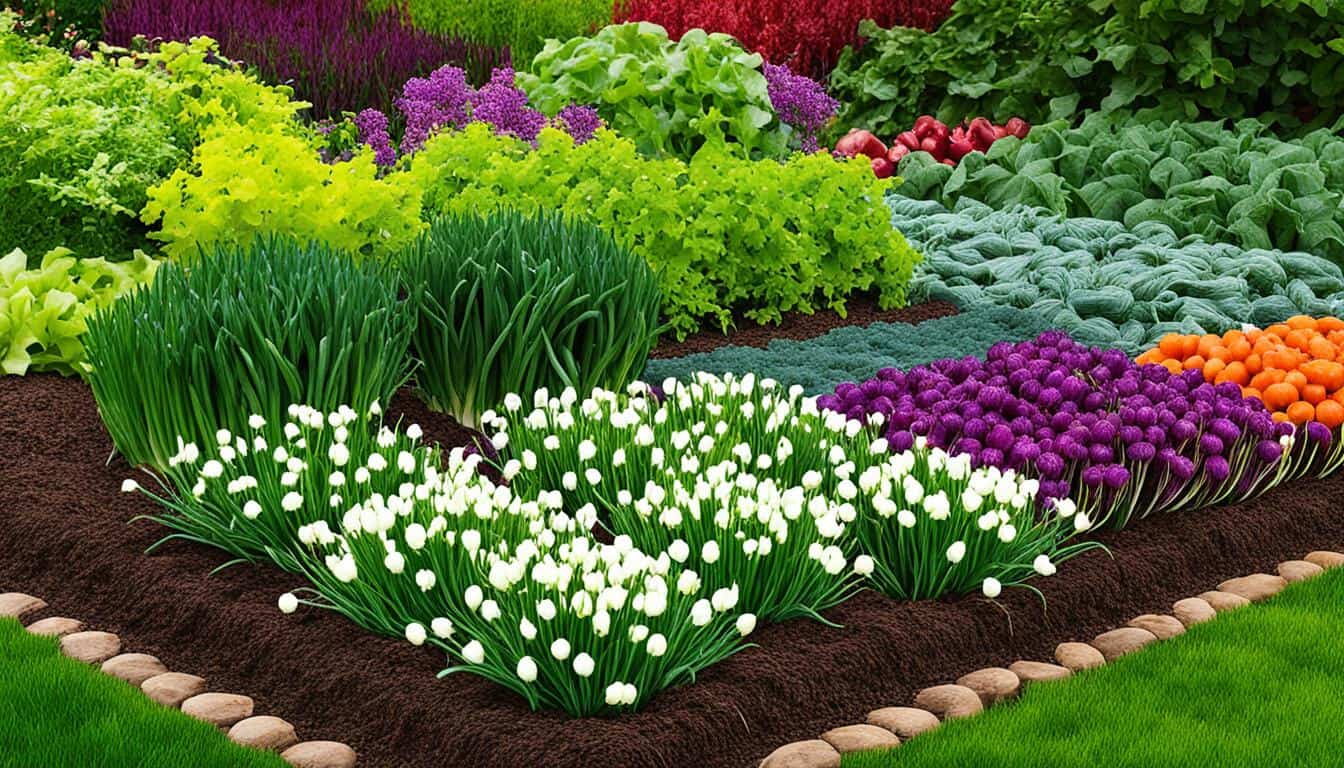
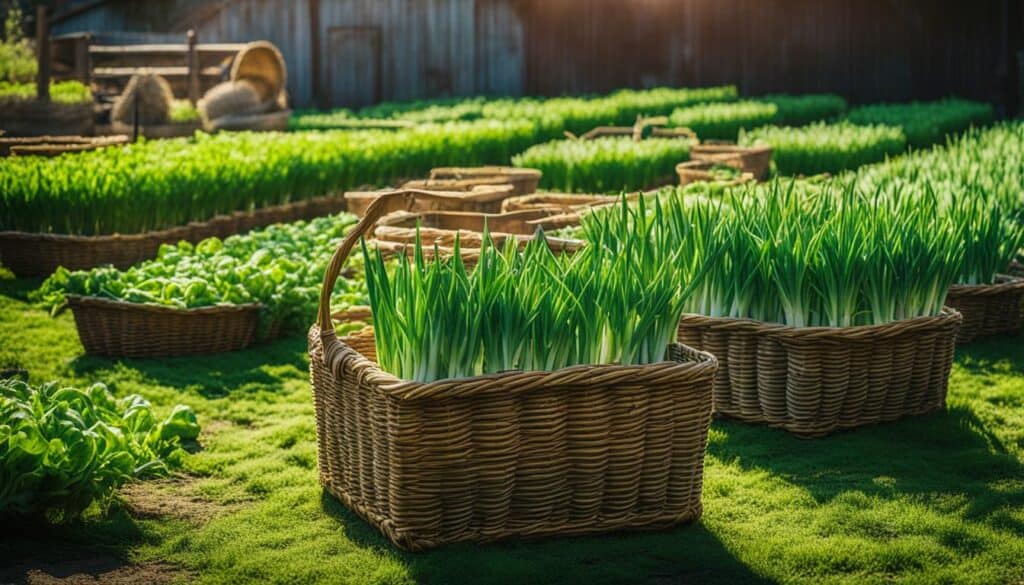
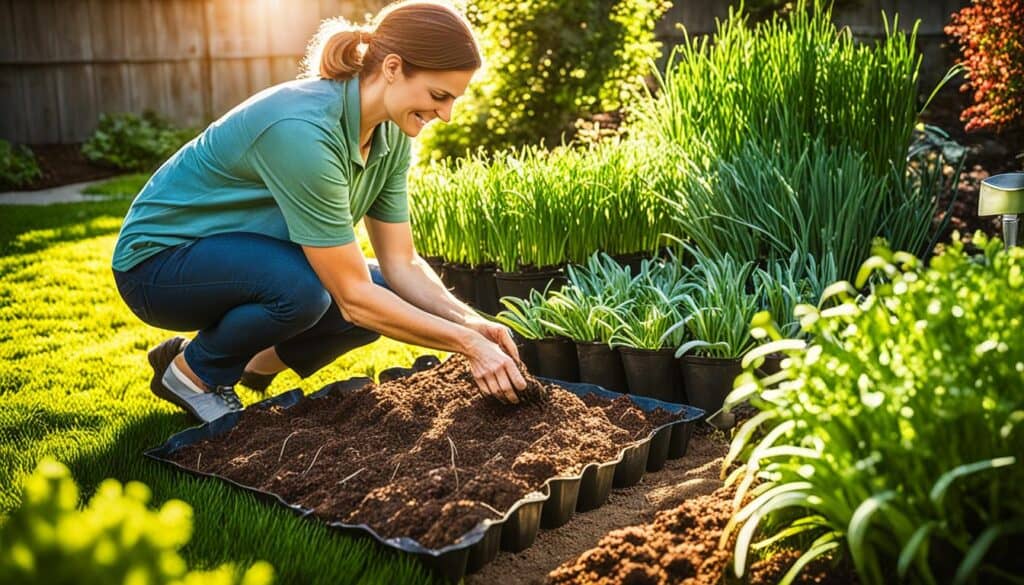
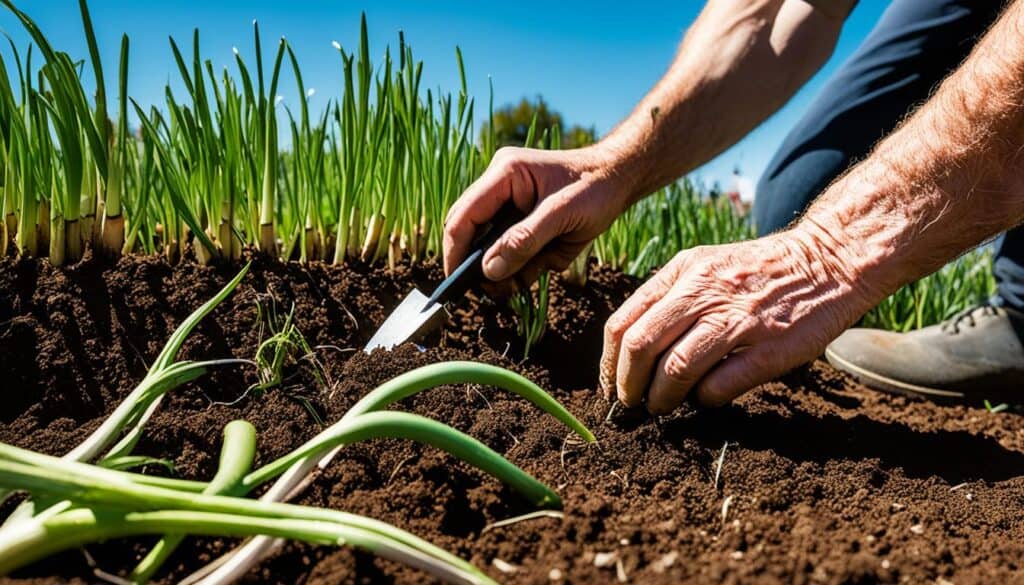
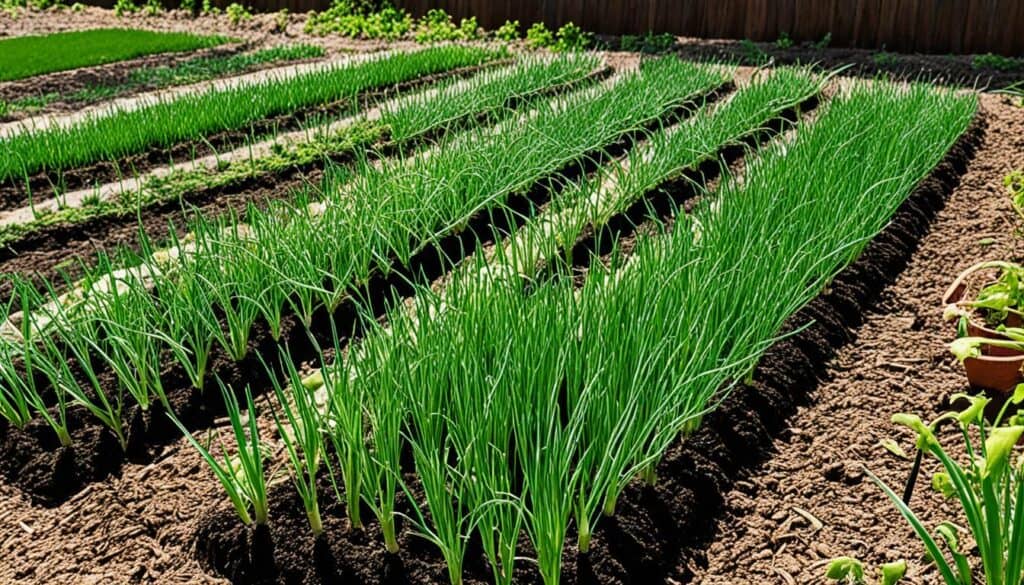
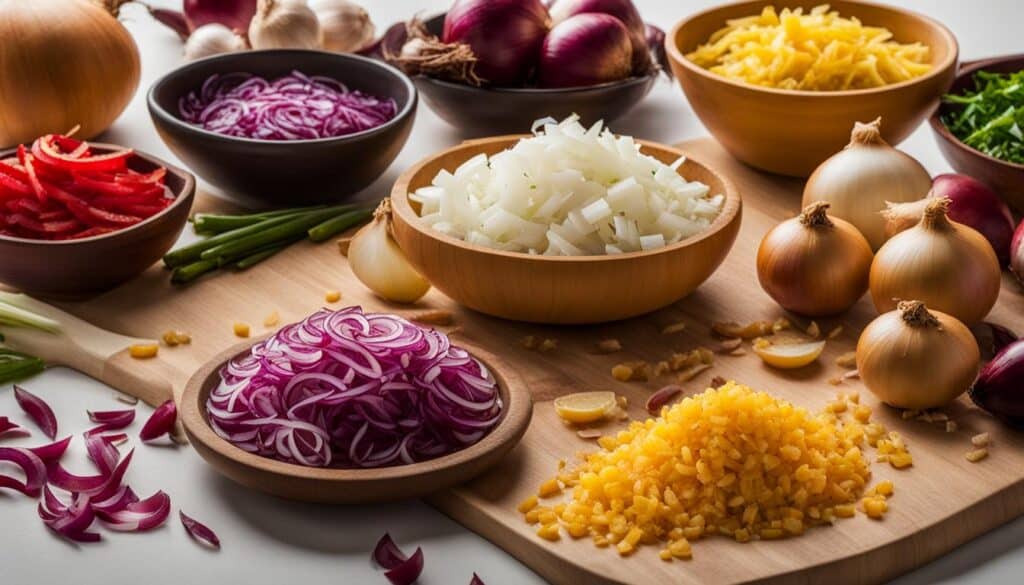
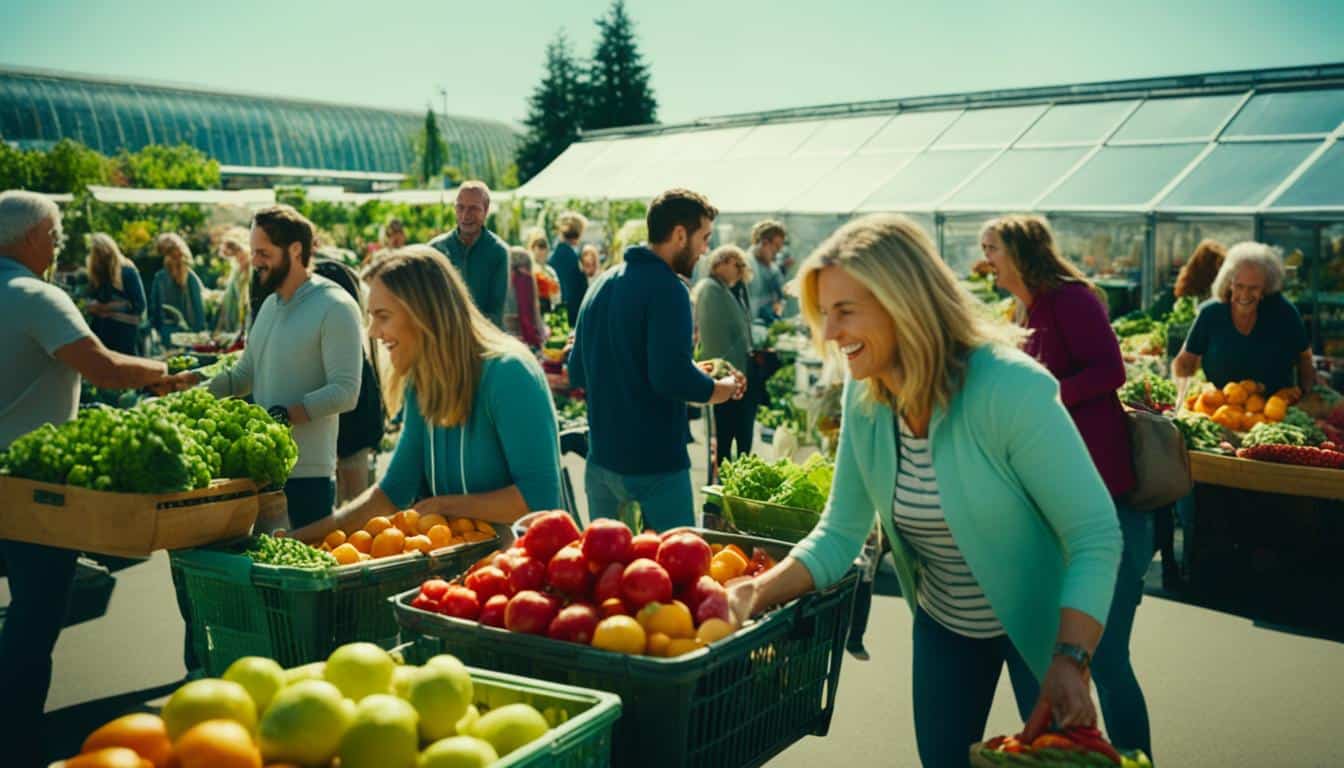
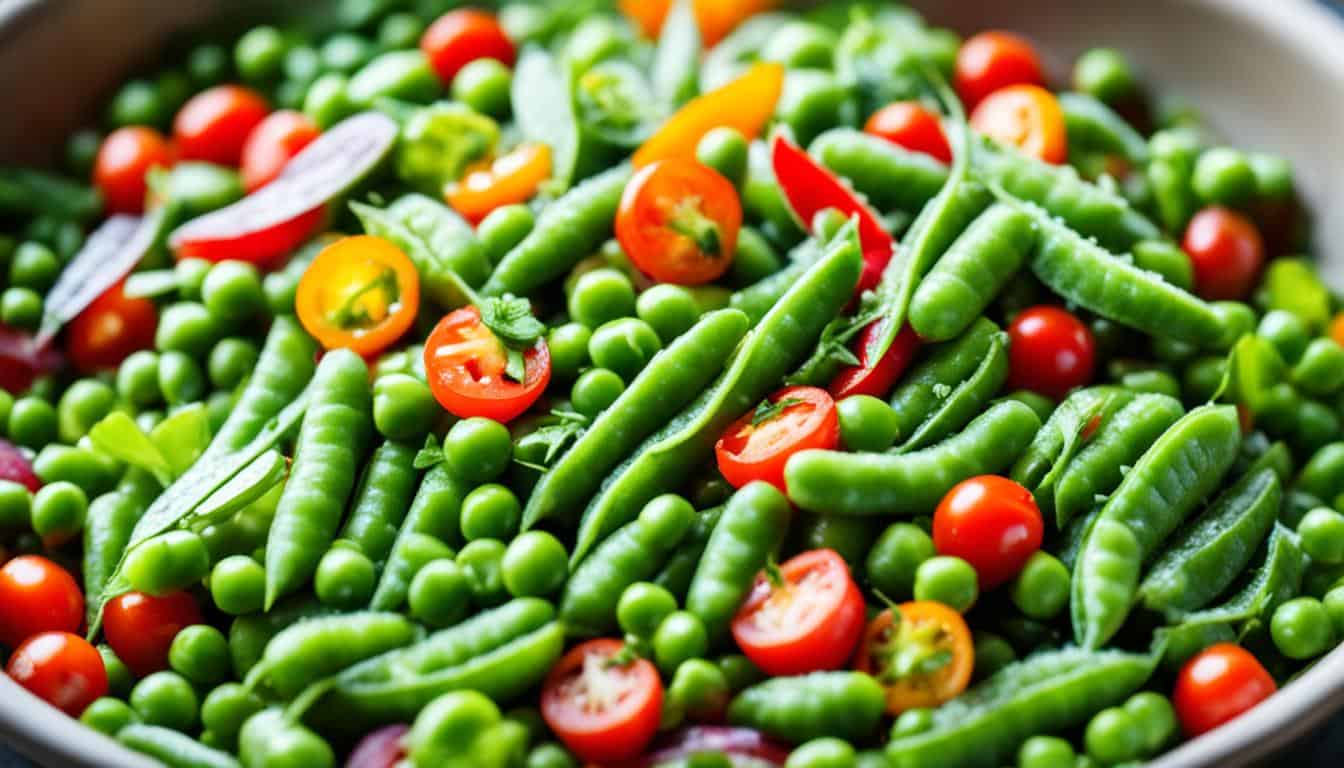
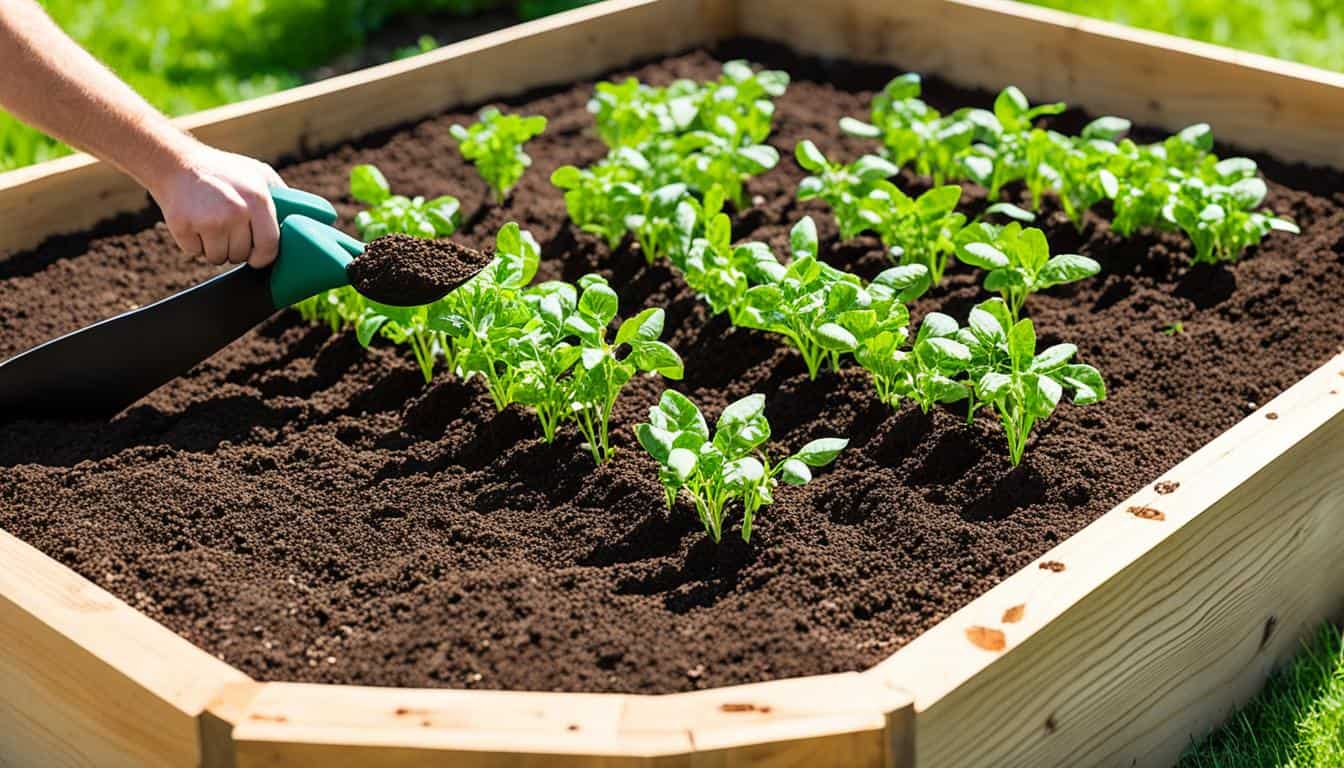
Leave a Reply